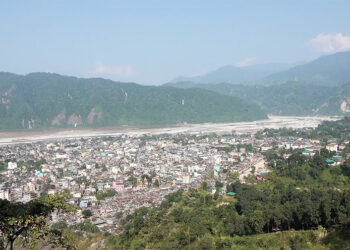 Exposure to lead, which is a toxic metal can cause anaemia. This is according to the World Health Organization, which says severe anaemia or lower number of red blood cells, impairs cognitive and motor development in children. A paediatrician at the national referral hospital says lead exposure could be contributing to the high levels of anaemia among children in Bhutan.
Exposure to lead, which is a toxic metal can cause anaemia. This is according to the World Health Organization, which says severe anaemia or lower number of red blood cells, impairs cognitive and motor development in children. A paediatrician at the national referral hospital says lead exposure could be contributing to the high levels of anaemia among children in Bhutan.
The National Blood Lead Level Survey 2024 tested about 3,000 Bhutanese children aged one to six years. It found that the risk of anaemia increased as blood lead levels went up.
Around 39 per cent of children were found anaemic. Of which, 0.5 per cent of the children were found having severe anaemia.
The survey found that over half of the children with 10-19.9 microgrammes per decilitre of lead in their body were anaemic. The prevalence of anaemia was 32% among children with blood lead levels of less than 3.5 micrograms per deciliter and increased to 50.1 per cent for those with blood lead levels between 10.0 to 19.9 micrograms per deciliter.
Dr Tulsi Ram Sharma, Paediatrician, JDWNRH said, “We had a public health intervention where we give annefolicate supplementation in the school. Even after years of implementation of these measures, our level of anemia prevalence still is really high and it’s a severe public health problem. Now with the evidence coming like the prevalence of lead in the blood among children 1 to 6 years is to the tune of 75%. Now we are thinking whether lead is the culprit of cause of anaemia in Bhutan, but we need to ascertain it by further studies.”
In severe cases, anaemia is associated with fatigue, weakness, dizziness and drowsiness.
Dr Tulsi Ram Sharma said, “If as a medical practitioner checks the child, his heart rate will be faster, and they will be breathing faster to meet the same level of oxygen requirement in the body. You will not have so much energy to run around, and you will be less active. And if the level of red blood cells is very very low, his heart will no more be able to compensate and might lead to even heart failure.”
He suggested that maintaining good dietary habit, can not only prevent lead absorption but also help prevent and cure anaemia.
Likewise, a nutritionist said people should consume foods rich in iron such as liver and red meat among others.
Tenzin Wangchuk, Registered Dietician, JDWNRH said, “Those who are opting for plant-based diet, those who do not want to eat red blood or liver or egg, then, they should focus on green leafy vegetables because we all know that green leafy vegetables are a good source of iron. And again, as a dietician, I would advise people to eat them half-cooked, because when we overcook the vegetables, we lose micronutrients, especially heat-sensitive vitamins and minerals.”
He recommended not to mix cheese and milk with leafy vegetables as they decrease iron absorption.
The mother and child hospital has a nutritional programme to advise parents and children below five years about the importance of nutrition.
In Bhutan, lead is found in brass or metal utensils, religious items, Jinlab, drinking cups or glasses, and spices among others.
The 2023 National Health Survey found that more than 40 per cent of children are affected by the condition. This figure, according to the WHO represents a severe public health issue in Bhutan.
Singye Dema
Edited by Kipchu








